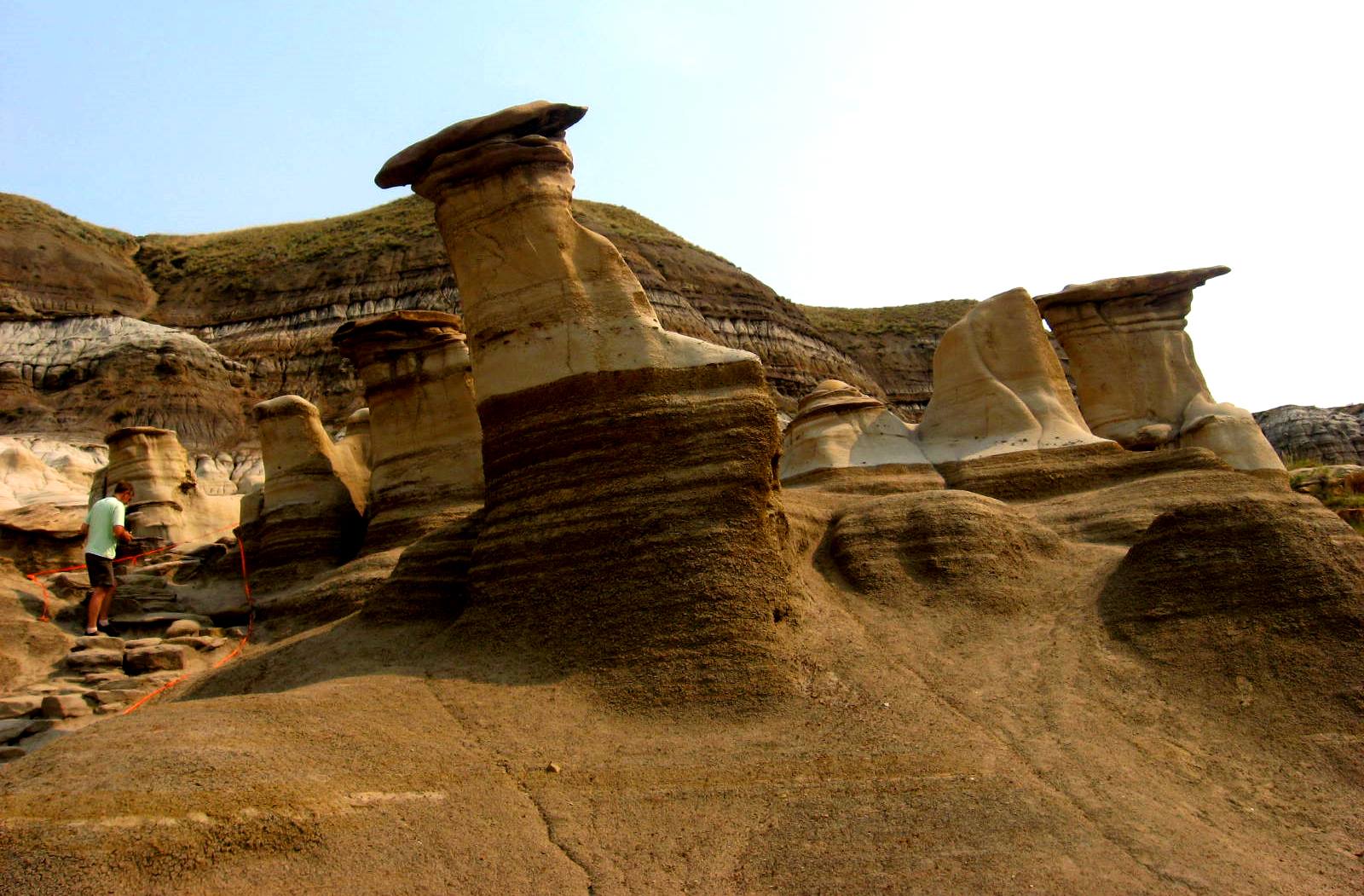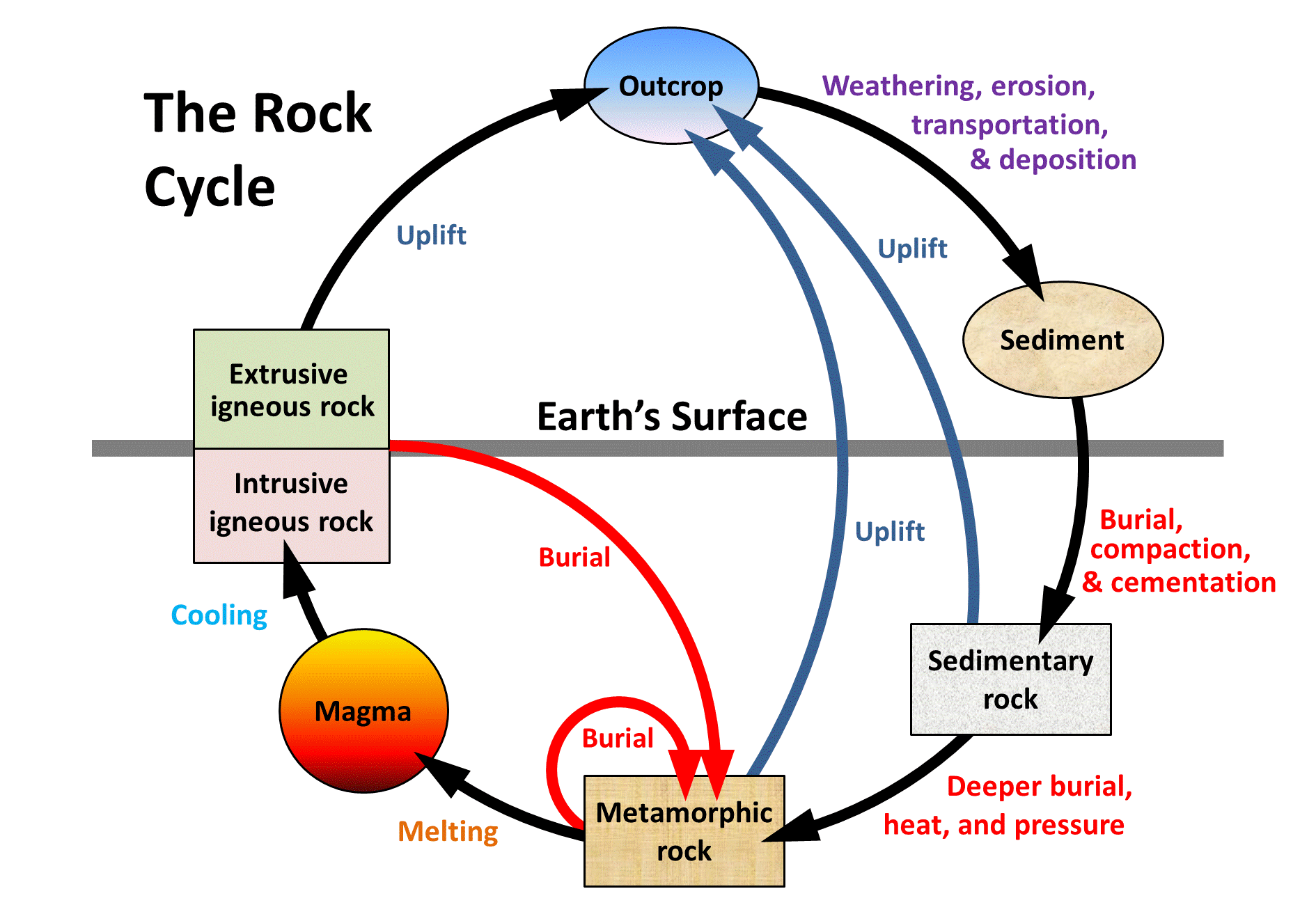Chapter 5 Weathering and Soil
Learning Objectives
After carefully reading this chapter, completing the exercises within it, and answering the questions at the end, you should be able to:
- Explain why rocks formed at depth in the crust are susceptible to weathering at the surface.
- Describe the main processes of mechanical weathering, and the types of materials that are produced when mechanical weathering predominates.
- Describe the main processes of chemical weathering, and the products of chemical weathering of minerals such as feldspar, ferromagnesian silicates, and calcite.
- Explain the type of weathering processes that are likely to have taken place to produce a particular sediment deposit.
- Discuss the relationships between weathering and soil formation, and the origins of soil horizons and some of the different types of soil.
- Describe and explain the distribution of some of the important soil types in Canada.
- Explain the geological carbon cycle, and how variations in rates of weathering can lead to climate change.

Weathering is what takes place when a body of rock is exposed to the “weather”—in other words, to the forces and conditions that exist at Earth’s surface. With the exception of volcanic rocks and some sedimentary rocks, most rocks are formed at some depth within the crust. There they experience relatively constant temperature, high pressure, no contact with the atmosphere, and little or no moving water. Once a rock is exposed at the surface, which is what happens when the overlying rock is eroded away, conditions change dramatically. Temperatures vary widely, there is much less pressure, oxygen and other gases are plentiful, and in most climates, water is abundant (Figure 5.01).
Weathering includes two main processes that are quite different. One is the mechanical breakdown of rock into smaller fragments, and the other is the chemical change of the minerals within the rock to forms that are stable in the surface environment. Mechanical weathering provides fresh surfaces for attack by chemical processes, and chemical weathering weakens the rock so that it is more susceptible to mechanical weathering. Together, these processes create two very important products, one being the sedimentary clasts and ions in solution that can eventually become sedimentary rock, and the other being the soil that is necessary for our existence on Earth.
The various processes related to uplift and weathering are summarized in the rock cycle in Figure 5.02.

Image Descriptions
Figure 5.02 image description: “The Rock Cycle.” The rock cycle takes place both above and below the earth’s surface. The rock deepest beneath the earth’s surface and under extreme heat and pressure is metamorphic rock. This metamorphic rock can melt and become magma. When magma cools, if below the earth’s surface it becomes “intrusive igneous rock.” If magma cools above the earth’s surface it is “extrusive igneous rock” and becomes part of the outcrop. The outcrop is subject to weathering and erosion, and can be moved and redeposited around the earth by forces such as water and wind. As the outcrop is eroded, it becomes sediment which can be buried, compacted, and cemented beneath the earth’s surface to become sedimentary rock. As sedimentary rock gets buried deeper and comes under increased heat and pressure, it returns to its original state as metamorphic rock. Rocks in the rock cycle do not always make a complete loop. It is possible for sedimentary rock to be uplifted back above the Earth’s surface and for intrusive and extrusive igneous rock to be reburied and became metamorphic rock. [Return to Figure 5.02]
Media Attributions
- Figures 5.0.1, 5.0.2: © Steven Earle. CC BY.
a range of processes taking place in the surface environment, through which solid rock is transformed into sediment and ions in solution
